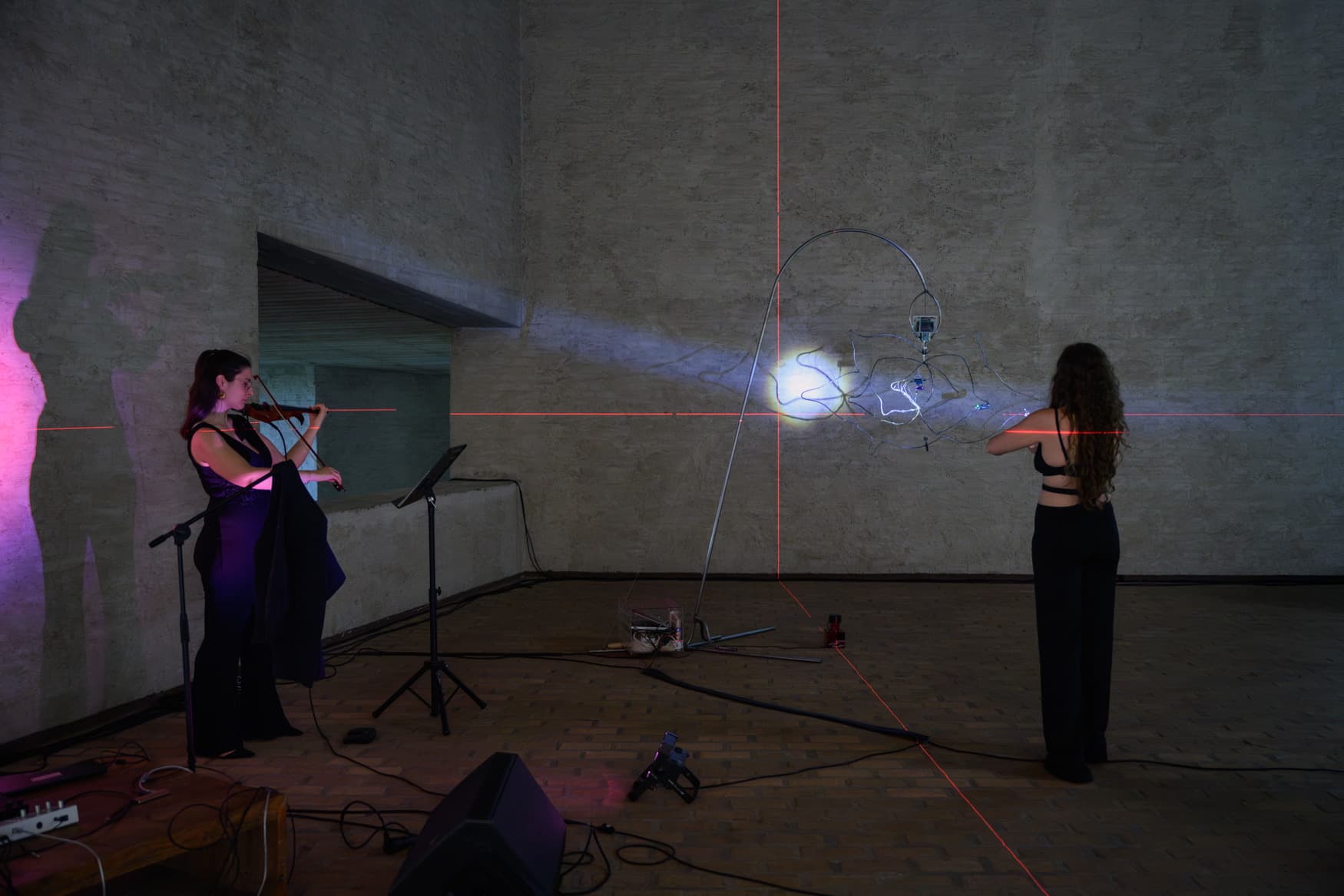Giada La Gala
Artificial Times
Biography
Giada La Gala is a scientist and artist. Her artistic practice is a dialogue with nature's phenomena, unveiling research through performative gestures using sculptures as instruments. In her quantum physics PhD, she investigated the interaction between light and motion; in her postdoc she made the smallest possible holes. Rooted in international collective organizations, she creates bridges within art-science institutional collaborations.

Reality comes in waves
"Nothing in nature repeats identically. Every instance of movement and each instance of change, from the tiniest vibrations to the largest collisions, are in essence unrepeatable. Randomness is omnipresent in the occurrence of phenomena that just happen, each time in a new(born) version."* Randomness is that "spark of the real", to which, as humans, we are sensitive too. During the two years research Master's at Sandberg Institute, Giada worked using technological artefacts, scientific concepts and tools within a research guided by coincidences, resonances and intuition, therefore outside of a scientific method. The artistic practice is built out of gestures of re-appropriation of those material attunements that stand at the core of her research, present and past. Laser light, glass, sensors and data. Thirteen LDR sensors are arranged on a two-dimensional sculpture shaped to capture an instant of the diffraction pattern of laser light through bubbling glass (Prince Rupert drop). The sensors capture light waves and light variation, transforming the light in an electron flow. The variations, captured digitally into data are transferred via internet communication and transformed by a classical computer to render a movement. The quantum feature is there to create an unpredictable, in fact non-deterministic reaction to the visitor presence, introducing the true randomness at the core of nature's heart, captured at the nanoscale and expanded to a perceptual, macroscopic, dimension. Even though the communication to the quantum machine happens via the internet (and it is discontinued by technical queues), connecting to a distant machine, it is one of the most direct ways to experience the atomic world at the foundation of all matter. The 13 here is nothing but a magic number, a resonating reference to "13 blues for 13 moons", A Silver Mt. Zion album from 2008. This album and other works from artists such as Jessica Moss, Laurie Anderson and Peter Gregson are inspiring the drone notes from the violin composition in dialogue with the installation during its performative activation. For the performative act, the light-dependent installation transforms itself into an instrument, which interacts with the violin and modifies her sounds in an unpredictable fashion, dependent on performative gestures in conversation with immersive light patterns. The sounds are played by and with the light. The coherent notes of the violin strings, perfect harmonic oscillators, are dispersed in a sea of noise created with and by the visitors of the show during the three days at Thomaskerk. The composition that emerges carries the element of improvisation and "unfinished" quality**, unveiling randomness across domains of mater, culture and affect. With Delia La Gala at the violin, the sisters duo is united beyond distance and time. * Giada La Gala, Neuromagma. Sandberg Institute 2025. Thesis dissertation. ** "The unfinished is the magical halo that triggers associations and emotions that belong to a sphere superior to reason". From E. Battisti, Magia e Non Finito, in E. Battisti (ed.), Michelangelo Scultore, Rome, Curcio Editore, 1964, pp. 96–7.
